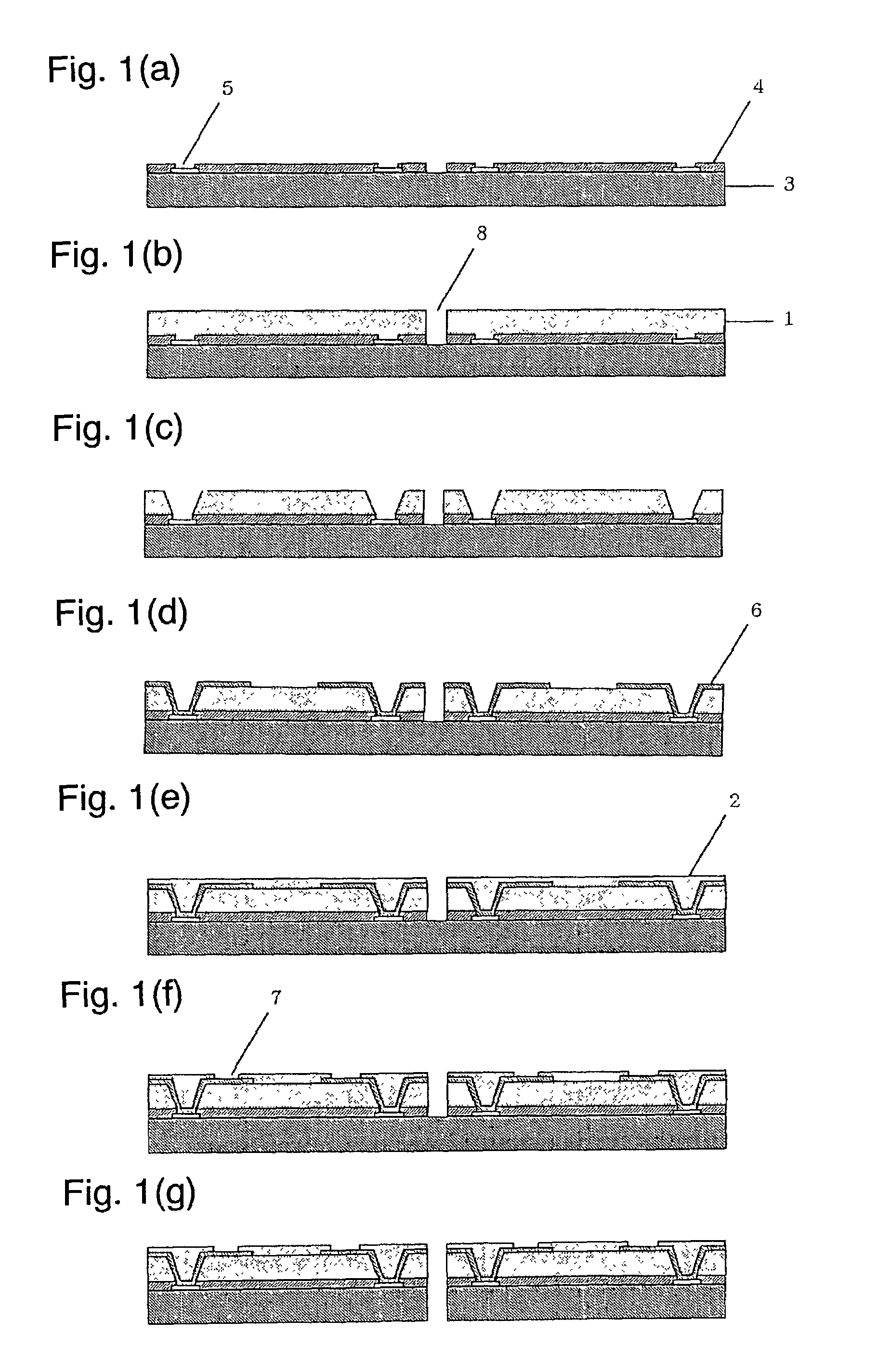Resin composition, heat-resistant resin paste and semiconductor device using them and method for manufacture thereof
a technology of resin composition and heat-resistant resin, which is applied in the direction of solid-state devices, machines/engines, group 5/15 element organic compounds, etc., can solve the problems of warpage of substrates, warpage of frames, and small residual stress,
- Summary
- Abstract
- Description
- Claims
- Application Information
AI Technical Summary
Benefits of technology
Problems solved by technology
Method used
Image
Examples
example 1
[0241]In a one-liter four-necked flask equipped with a thermometer, a stirrer, a nitrogen inlet tube, and a condenser equipped with an oil-water separator was charged 98.4 g (240 mmol) of 2,2-bis[4-(4-aminophenoxy)phenyl]propane (BAPP) under nitrogen atmosphere, and 700 g of N-methyl-2-pyrrolidone (NMP) was added thereto to dissolve the mixture. Next, while cooling the mixture not to exceed 20° C., 51.2 g (244 mmol) of trimellitic anhydride chloride (TAC) was added to the mixture. After stirring the mixture at room temperature for one hour, 30.3 g (300 mmol) of triethylamine was added while cooling the mixture not to exceed 20° C., and the resulting mixture was reacted at room temperature for 3 hours to produce a polyamic acid varnish. The resulting polyamic acid varnish was further subjected to dehydration reaction at 190° C. for 6 hours to produce a varnish of a polyether amide imide. This varnish of the polyether amide imide was poured into water and the resulting precipitates we...
example 2
[0247]Production of the resin composition and the semiconductor device, and the evaluations thereof were conducted in the same manner as in Example 1 except that, in a synthesis of a polyether amide imide which is soluble in a polar solvent at the room temperature, a diamine compound was changed to 93.3 g (216 mmol) of bis[4-(4-aminophenoxy)phenyl]phenyl]sulfone (BAPS) and 6.0 g (24 mmol)of 1,3-bis(aminopropyl)tetramethyldisiloxane. The results are shown in Table 1.
example 3
[0248]Production of the resin composition and the semiconductor device, and the evaluations thereof were conducted in the same manner as in Example 1 except that, in a synthesis of a polyether amide imide which is soluble in a polar solvent at the room temperature, a diamine compound was changed to 78.7 g (192 mmol) of 2,2-bis[4-(4-aminophenoxy)phenyl]propane (BAPP), 6.0 g (24 mmol) of 1,3-bis(aminopropyl)tetramethyldisiloxane and 4.8 g (24 mmol) of 4,4′-diaminodiphenyl ether, an acid compound was changed to 24.8 g (122 mmol) of isophthalic acid dichloride and 25.6 g (122 mmol) of trimellitic anhydride chloride. The results are shown in Table 1.
PUM
| Property | Measurement | Unit |
|---|---|---|
| particle size | aaaaa | aaaaa |
| thermal decomposition temperature | aaaaa | aaaaa |
| thermal decomposition temperature | aaaaa | aaaaa |
Abstract
Description
Claims
Application Information
 Login to View More
Login to View More - R&D
- Intellectual Property
- Life Sciences
- Materials
- Tech Scout
- Unparalleled Data Quality
- Higher Quality Content
- 60% Fewer Hallucinations
Browse by: Latest US Patents, China's latest patents, Technical Efficacy Thesaurus, Application Domain, Technology Topic, Popular Technical Reports.
© 2025 PatSnap. All rights reserved.Legal|Privacy policy|Modern Slavery Act Transparency Statement|Sitemap|About US| Contact US: help@patsnap.com



